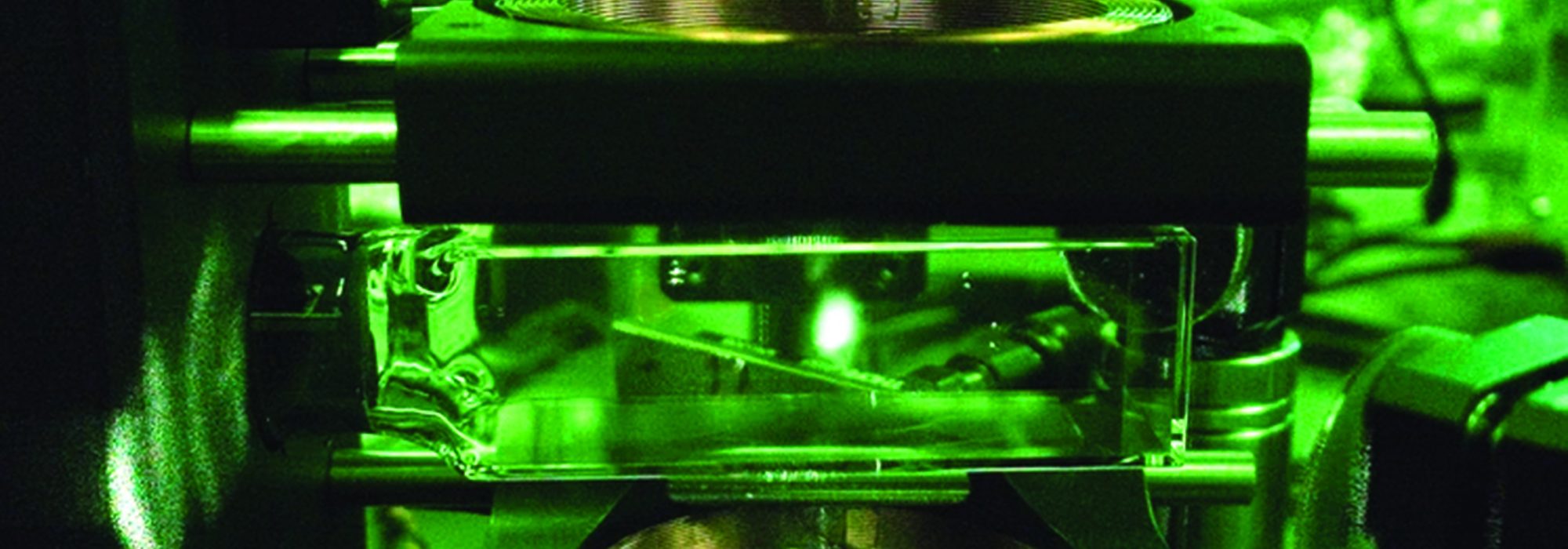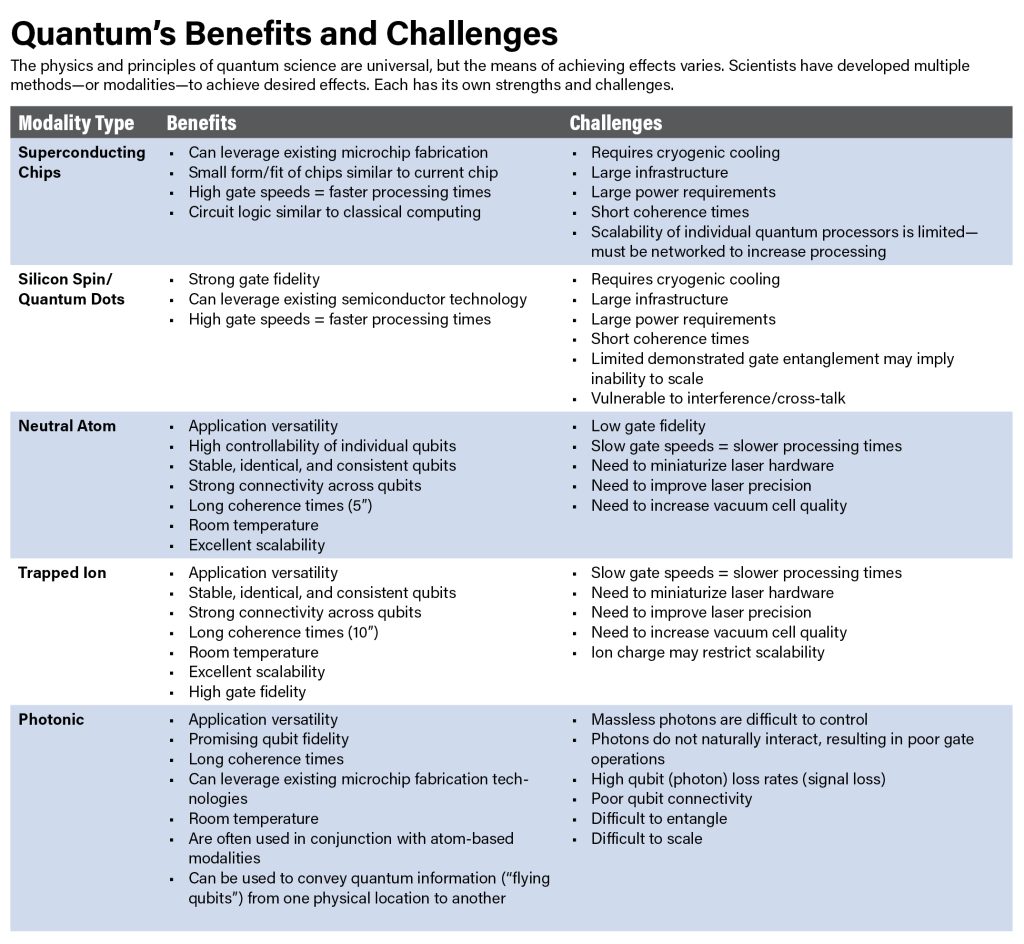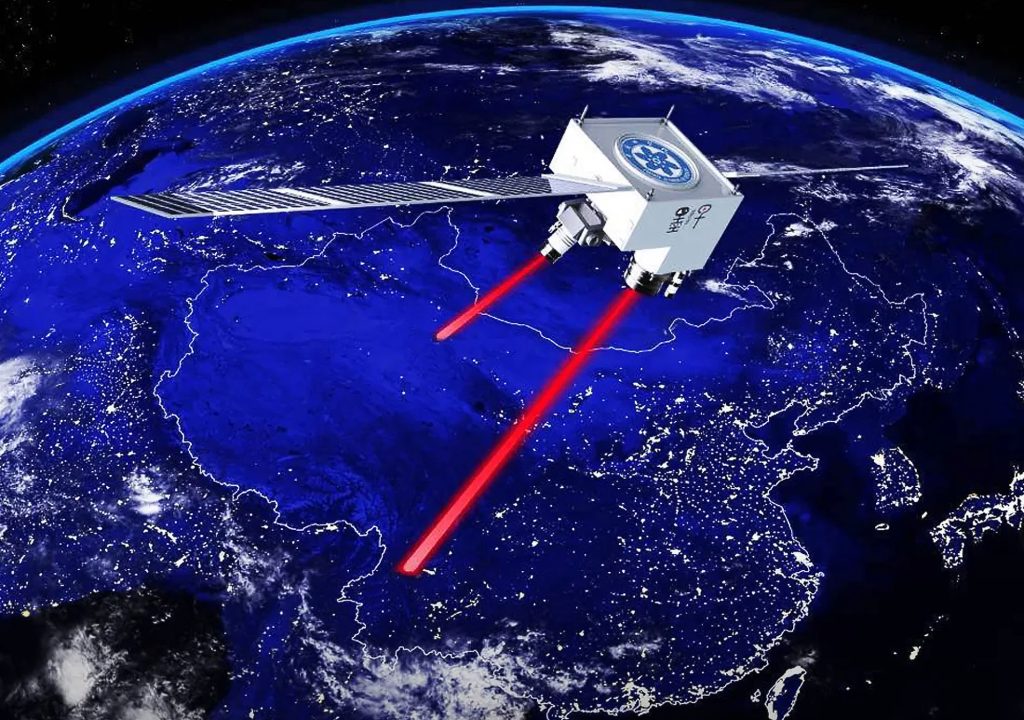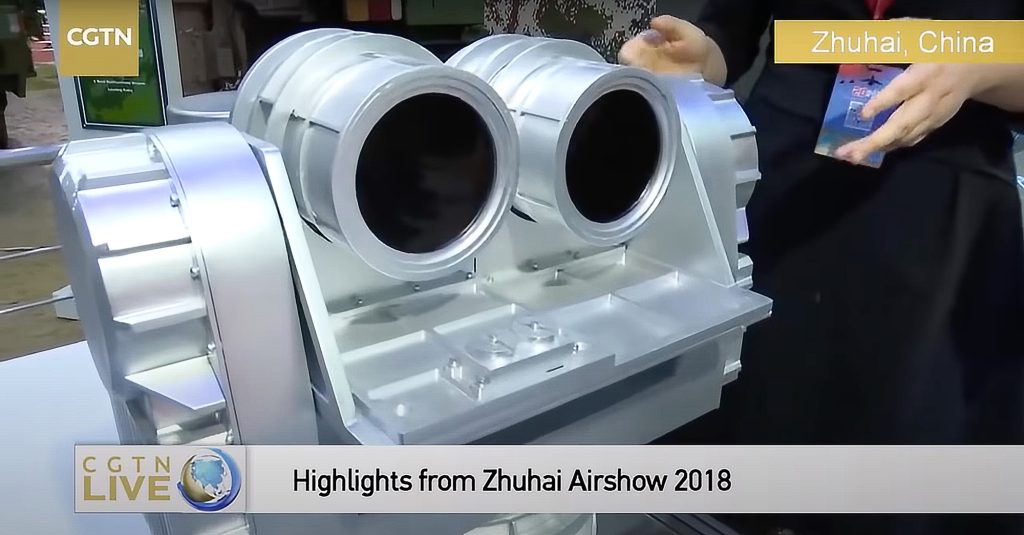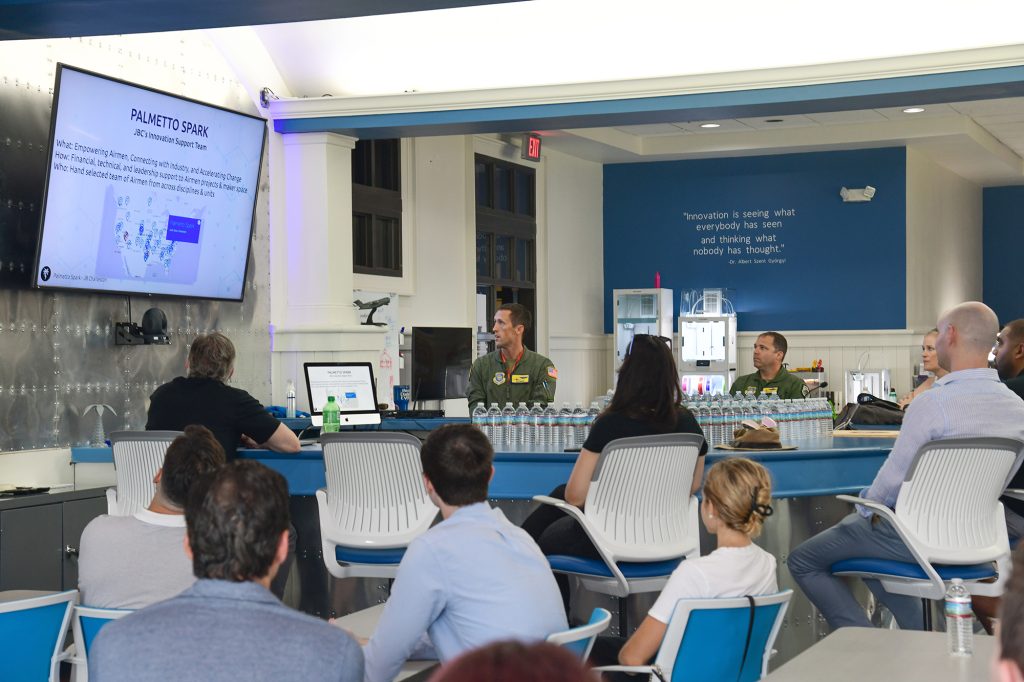Understanding the Science to Make the Right Choices.
Since World War II and the birth of atomic power, the United States has established military dominance by exploiting technologically advanced capabilities to achieve overmatch against numerically superior adversaries. The explicit pursuit of a technological superiority over the Soviet Union was the premise of the “Second Offset” strategy of the 1970s and 1980s, in which the Department of Defense accelerated the development of stealth, precision navigation and timing, precision weapons, improved datalinks and communications, advanced sensors, and greater computer processing to yield competitive overmatch against rivals. Ensuring such a technological advantage is even more important today, yet the United States no longer maintains the scientific and manufacturing primacy it enjoyed during the Cold War.
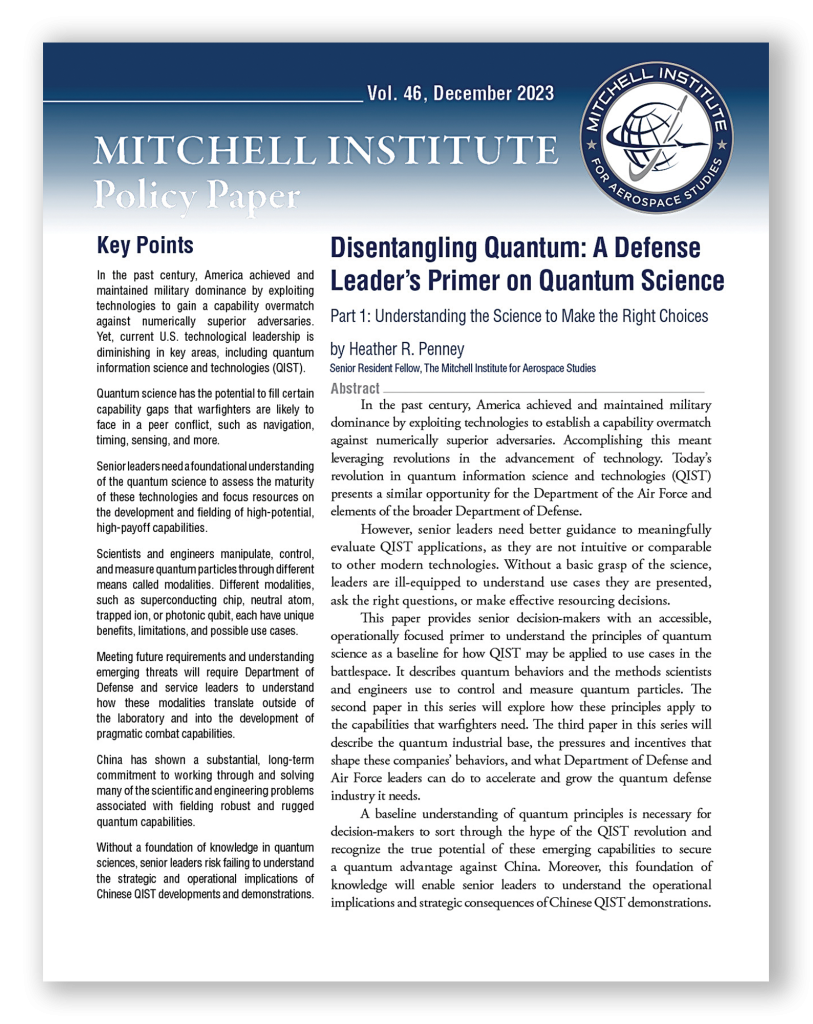
Heather Penney is a senior resident fellow at the Mitchell Institute for Aerospace Studies.
Download the entire report at
To regain a technological lead and secure a military advantage, DOD has identified quantum information science and technology (QIST) as among the core technologies in need of “Third Offset” investment. The United States and China are intense competitors in this pursuit. The value of “leap ahead” technologies is clear. In the Second Offset, advanced sensing and tactical datalinks enabled forces to share situational awareness across the battlespace, delivering an information advantage to battle managers and mission commanders. That, in turn, helped them make better decisions and employ forces more effectively. Stealth enabled aircraft to evade detection, changing the traditional attrition calculus and seizing the ability to surprise. GPS and precision-guided munitions decreased the number of weapons necessary to achieve desired effects against targets. It’s precisely this technological overmatch that proved so decisive in Operation Desert Storm and subsequent operations.
Quantum technology could constitute similar leap-ahead capability, introducing a new regime for competition, subverting adversary countermeasures, and introducing new strategies. Quantum sensors promise accuracy, stability, sensitivity, and precision far exceeding existing technologies. Quantum computers promise unparalleled computing power, enabling encryption-breaking and problem-solving on a scale and speed not possible today. Because these capabilities are sought by adversaries as well as the U.S., it is critical that DOD understand and shape the development of this technology. As the Congressional Research Service notes, quantum technologies “could hold significant implications for the future of international security writ large.”
DOD leadership realizes the value of successfully fielding quantum applications both before adversaries can and also before they can develop countermeasures. Like stealth and precision strike, QIST could deliver a lasting military primacy to bolster U.S. deterrence. Quantum timing and navigation could replace dependencies on space-based GPS; quantum sensing could enhance ISR and kill chains; and quantum computation could decrypt encoded messages and enhance machine learning.
Failure to invest and ceding that capability advantage to an adversary, on the other hand, would have grave implications. This risk is particularly relevant for the Department of the Air Force given the criticality of navigation, timing, sensing, and spectrum control to Air Force and Space Force missions.
Emerging Field
It may not yet be possible to fully anticipate all the potential use cases for QIST. When the first general-use digital computers came about in 1945, the electronic numerical integrator and computer’s (ENIAC) initial purpose was to solve cumbersome mathematical equations, such as ballistic trajectories, in laboratory settings. Back then, few would have predicted a future in which smartphones, modeling and simulation, or computer-generated graphics became ubiquitous. QIST may prove to be similarly transformative.
Congress passed the National Quantum Initiative (NQI) in 2018, recognizing that QIST was on the cusp of transitioning from promising academic theory to real-world applications. The intent was to shepherd a “whole-of-government approach to ensure the continued leadership of the U.S. in QIS [quantum information science] and its technology applications.” The legislation directed creation of a National Quantum Coordination Office (NQCO) to develop a 10-year plan to accelerate QIST applications across multiple sectors. NQCO activities and oversight include coordinating efforts among federal agencies, providing funding to basic research in universities and federal laboratories, developing the workforce, and establishing standards. The NQCO also established the Quantum Economic Development Consortium (QED-C), a membership organization whose mission is to grow the commercial quantum industry and supply chain. Subsequent National Defense Authorization Acts and the 2022 CHIPS and Science Act further buttressed support for the QIST development.
These starter initiatives, however, may not be sufficient. China is investing heavily in QIST R&D, and the Chinese Communist Party (CCP) has the power to move more rapidly than the U.S. government.
What it will take to achieve a “quantum advantage” remains hard to define. To quantum scientists, “quantum supremacy,” “quantum advantage,” and “quantum primacy” simply mean the ability of a quantum computer to solve a problem that no traditional computer could do. For DOD, a more useful working definition of “quantum advantage” in relation to China and its QIST efforts might include the scientific research base resident in universities and laboratories; the industrial base and manufacturing workforce needed to realize QIST potential; the intellectual workforce for quantum design, engineering, and programming; and the ability to deploy meaningful capability and the readiness of warfighters to employ it. This comparative assessment, unlike the more academic one, also recognizes that quantum advantage is not a “zero-day” event, but rather a marathon.
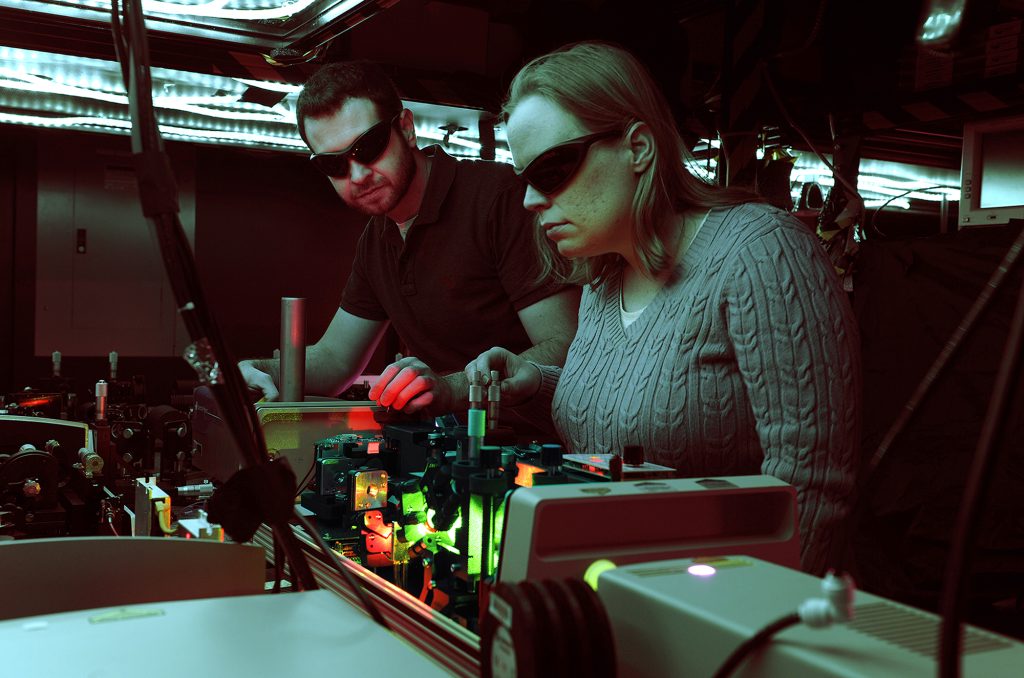
Understanding quantum science
Even for leaders with technical backgrounds, quantum science can be confounding. Yet without a basic knowledge of QIST, leaders cannot judge for themselves whether or not proposed projects have real value to the warfighter. Senior leaders must have their own understanding to make informed requirements, resourcing, and programmatic decisions. This does not mean that they need to become quantum scientists or solve complex mathematical equations, but they should be sufficiently literate to ask the right questions, match the technology to high-value use cases, and identify key technological challenges. Unfortunately, the Defense Science Board recently concluded that when it comes to DOD and quantum, “there is a notable lack of rigorous analysis tying performance to mission specifications and/or novel capability.” More work is required to understand how the foundational principles of quantum science can address capability gaps and vulnerabilities for the warfighter.
The leadership perspective is crucial because the scientists and engineers seeking to transition QIST from the laboratory to the real world may not fully understand the demands of the operational environment or how quantum capability could or should be integrated with other systems. Technological optimism may lead program managers to overestimate the value of a proposed application or underestimate the challenges in maturing quantum tech into a combat capability. Innovators approach QIST from mathematical, scientific, and even theoretical vantages; warfighters must provide the operational perspective.
Understanding quantum science basics
Recent advances in quantum mechanics, material sciences, and other technologies have created the potential to use QIST in new ways. Long-established applications of quantum phenomena include atomic clocks, lasers, solid-state semiconductors, solar cells, LEDs, and digital cameras and optical sensors. In today’s second quantum revolution, researchers apply advances in the underlying quantum sciences to deliberately isolate, control, and manipulate subatomic particles to capitalize on principles like superposition or entanglement to engineer radically new technologies.
A quantum bit, or qubit, is the most basic unit of quantum information. In conventional computing, a bit is binary in nature: either a 1 or 0. These two states relate to the physical property of a transistor, which is either powered on (a state of 1) or off (a state of 0). A qubit, on the other hand, can be in any of three states: powered, off, or superposition, which is a combination state between 1 and 0.
While quantum principles and properties are universal, the physical methods and hardware—or modalities—that physicists use to isolate, control, and measure quantum matter are not. Scientists use different modalities to build quantum bits and access quantum properties. Some modalities use cryostats to chill materials to near absolute zero to enable unique physical properties at those frigid temperatures. There is no single best modality or qubit type for all applications. One modality may be more effective at large-scale computing, while another modality may be better at sensing. Each has different strengths and challenges and must be matched to the particular use case. As with any technical design, there are trade-offs between capability, cost, complexity, size, and operational utility. Policymakers should probe these considerations to better understand the strengths and limitations of each and to best match research and development to warfighter needs.
All quantum systems are built on qubits, and how technologists build qubits can vary widely, as can qubit performance. Quantum states are very sensitive, making them both very useful and very fragile. Because of their inherent sensitivity, qubits are prone to error due to radiation, heat, impacts from other particles, or even the machine’s control systems.
A logical qubit is one or a grouping of qubits with a longer coherence that corrects for the faults induced by noise. Rather than shielding and striving for perfect qubits, a fault-tolerant system seeks to implement a sort of quality control to compensate for qubit errors. A common means of doing this is to entangle many different qubits together to achieve one “noise-free” or “idealized” logical qubit. Not all qubits are equal, and not all error correction techniques require the same volume of extra qubits.
Quantum companies are often formed around specific technological choices. A QIST company’s modality, design, and engineering, however, will have a direct impact on the quality of its qubits and ability to manipulate quantum particles and behavior. A company based on superconducting chips, for example, is unlikely to be able to develop a sensor appropriate to integrate on a fighter aircraft due to cryogenic cooling, power, and space requirements.
A working knowledge of quantum science, therefore, can be significant in evaluating appropriate solutions and use cases.
China Seeks Quantum Advantage
Experts now estimate that China has invested upward of $15 billion across all of its QIST research and development efforts to date, a figure that far outpaces the United States and other countries. China holds twice as many quantum patents as the United States and is aggressively pursuing QIST for military applications.
China launched its Quantum Experiments at Space Scale (QUESS) in 2011, an ongoing yearslong effort by the Chinese Academy of Sciences (CAS) to harness the potential of QIST. QUESS seeks to tackle the many difficult problems of quantum communication, including a new kind of encryption protocol. The 2016 Micius satellite launch demonstrated China’s ability to deploy quantum key distribution (QKD), a form of quantum-based encryption, between Beijing and a ground station in western China. The CAS team also used Micius to perform other experiments notable for the distances involved, and in 2017, they conducted the “world’s first quantum-encrypted virtual teleconference” with the Austrian Institute for Quantum Optics and Quantum Information (IQOQI), bridging a distance of over 4,600 miles. CAS has since continued to develop and demonstrate novel experiments designed to further secure quantum communications across “untrusted” nodes.
While the National Security Agency (NSA) discourages U.S. entities from using QKD for encryption, China’s successful demonstration proves its ability to produce and encode on-demand photonic qubits, maintain signal strength and avoid meaningful qubit loss across thousands of miles of free-space and fiberoptic transmission, and develop secure and accurate quantum repeater stations.
The QUESS program is just one of many lines of effort the CCP is pursuing. China has also made significant strides in quantum computation. In 2021, the University of Science and Technology of China (USTC) revealed an advanced superconducting computer, named the Zuchongzhi 2 after a famous Chinese mathematician and inventor, which utilized 56 qubits out of a total of 66. What was remarkable was that the Zuchongzhi 2 reportedly “cracked a problem three times tougher” than Google’s Sycamore computer could solve. The Google Sycamore computer is a 53-qubit superconducting computer that had marked the first point of “quantum supremacy” in 2019. China also demonstrated Jiuzhang 2, a photonic qubit computer whose computational speed and power far exceeds those other efforts by factors thought to be in the billions—at least in highly controlled laboratory settings.
Aside from the construction of prototype quantum computers, Chinese researchers have been developing techniques to solve fundamental quantum challenges, such as error correction and code-breaking. A late-2022 paper by Chinese university researchers proposes a method for breaking standard RSA encryption with a 372-qubit computer. RSA decryption, which could be used for a “harvest now, decrypt later” intelligence strategy, was previously estimated to require hundreds of thousands of qubits. While the paper is controversial in the scientific community and has not yet passed peer review, the research exemplifies China’s sustained effort.
China has made other quantum claims that warrant scrutiny. Public announcements regarding quantum radar, for example, have met with skepticism from international scientists. Quantum radar sends out one particle of an entangled pair, keeping the other in storage. If the entangled particle returns, it represents a positive detection of a target. China suggests this quantum radar is a jam-resistant counter-stealth capability, even marketing a prototype by the China Electronics Technology Group Corp. at the 2018 Zhuhai Air Show. A more recent 2021 paper from Tsinghua University claimed an improved quantum radar design that increased the probability of detection of a stealth object from 10 percent to 95 percent. Other scientists, however, remain skeptical.
The idea behind a quantum radar is that a photon changes when it bounces off a stealth aircraft, and therefore changes the stored partner photon. But quantum storage is still early in development, you cannot monitor the status of the stored photon for change or you’d collapse it, and while you might know the azimuth of the detected contact, you would have no idea of the range because you receive very few particles back. French physicist Fabrice Boust’s comments are representative: “I am convinced that when they announced their quantum radar it was not working … but they knew they would get a reaction.”
Even if RSA decryption and quantum radar are primarily CCP propaganda, China has no intention of being left behind in quantum science or technologies. In 2008, China established the “Thousand Talents Plan,” a government-led program to recruit and employ foreign scientific researchers in Chinese industry and academia. According to a U.S. Senate committee report, it is among over 200 talent recruitment programs the CCP is cultivating to accelerate domestic Chinese scientific innovation. These programs go well beyond job postings: Documented activities include conducting undisclosed scientific collaborations, obscuring Chinese institutional affiliations, academic and economic espionage, stealing intellectual property and technical data, and facilitating clandestine relationships with the People’s Liberation Army (PLA).
China’s 14th Five-Year Special Plan for Science and Technology Military-Civil Fusion, its newest strategic-economic plan, specifically highlights QIST, among other technologies such as artificial intelligence and machine learning, as a national imperative. This accounts in part for the Chinese government’s investment of an estimated $15.3 billion in quantum research to date. Although there is some debate regarding the veracity of these financial assertions, if accurate it would mean that the CCP’s investment is more than double that of the European Union ($8.4 billion) and triple that of the U.S. government ($3.7 billion) in quantum research. Even the most conservative estimates of Chinese investment— $4 billion—would have China easily outpacing U.S. government investment.
China’s experiments also represent practical military applications, even if they are not yet fieldable. Secretary of the Air Force Frank Kendall acknowledged, “It is quite clear to me that we are in a race for technological superiority with China as far as conventional warfighting is concerned.” The director of the China Aerospace Studies Institute concurred, warning that hypersonics and quantum computing stand as “niche fields,” where China is rapidly closing the gap between its capabilities and those of the U.S. Some in industry, including Booz Allen Hamilton’s head of Strategic Cyber Threat, believe China may be on track to surpass the United States.
Key takeaways for senior decision-makers
1. A sound understanding of the basics of quantum science is crucial to empower U.S. defense leaders to evaluate proposed QIST applications. This does not mean that they need to become quantum scientists or solve complex mathematical equations, but they should be sufficiently literate to ask the right questions, match the technology to high-value use cases, and identify key technological challenges. Understanding the principles of entanglement, interference, non-locality, teleportation, no-cloning, and so forth may seem highly esoteric, but it is vital to ensure that the discussions surrounding QIST programs do not leave senior leaders in the dark. Senior leaders must be equipped to press engineers on everything, including qubit coherence times; qubit overhead; logical qubits; power, size, and cooling requirements; and the overall ruggedness of the quantum system. When it comes to quantum technologies, the details matter.
2. Defense leaders must have a solid foundation in quantum science to appropriately contextualize the operational and strategic implications of Chinese technology demonstrations. China is aggressively pursuing quantum applications, including computation, quantum key distribution, and radar. While some of this is strategic peacocking, other quantum demonstrations are indicative of a clear commitment to solving the difficult problems of fielding useful quantum applications. A knowledge of the science can help policymakers evaluate Chinese developments. For example, some claims, such as quantum radar, appear intimidating and worrisome but are most likely empty bluster. Other very public demonstrations, such as QKD, may not have apparent use cases but clearly prove that China is dedicated to working through many of the scientific and engineering challenges to fielding a broad array of quantum capabilities. Senior leaders must take Chinese developments in quantum computing seriously and consider their potential strategic consequences.
3. U.S. defense leaders should establish a working definition of a quantum advantage that is not purely academic and recognizes the global strategic nature of the competition. A “quantum advantage” for DOD would evaluate the comparative technological positions of the United States and adversaries like China with respect to their QIST efforts. This comparative assessment offers a far more practical understanding of “quantum advantage” because it honors the global strategic nature of the competition. This definition, unlike the more academic one, also recognizes that quantum advantage is not a “zero-day” event but rather a marathon.
4. Policymakers should understand and consider the benefits and drawbacks of each modality and its qubits so that they may make informed decisions regarding how to best match modalities to their use cases. While some modalities may be more flexible and have benefits across a variety of applications, there is no single best modality. This means that senior leaders must be discerning when evaluating which modalities best match operational use cases. For example, the superconducting modality is probably not ideal for fighter aircraft applications. As with any technical design, policymakers must understand the trade-offs between capability, cost, complexity, size, and operational utility of quantum modalities.
5. U.S. defense leaders should identify high-payoff, near-term quantum applications that are matched to warfighter needs, and establish a quantum-based program of record to deliver that capability. To stimulate the advancement of QIST applications and deliver impactful capabilities to the warfighter, the Department of the Air Force should establish a quantum program of record. QIST must progress out of the basic research phase, and only a program of record will stimulate private equity and focus engineering and design in a way that can deliver capability to the warfighter. Establishing a program of record is key to ensure that warfighters have what they need to secure not just a quantum advantage but an operational advantage.
The nature of the strategic quantum competition with China does not give U.S. defense officials the luxury of time. DOD must accelerate the maturation of critical quantum technologies for defense—China will gladly surpass the U.S. quantum enterprise if we slow down. The DAF must take action now to help its leaders understand the underlying science needed to make choices that deliberately build up a robust and innovative quantum industrial base. Senior leaders must be able to make informed decisions on high-potential, high-payoff QIST applications if they are to provide future warfighters with the combat edge they need.
